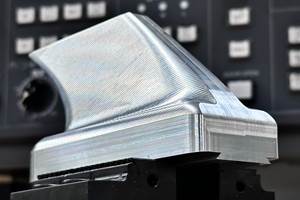Retiring? How To Keep Getting Income From Your Business
Joe's son, Bill, has been running the family business, Success Co. , for about six years.
Share






Joe's son, Bill, has been running the family business, Success Co., for about six years. Joe, age 64, now works four hours a day for nine months of the year.
In the past, Joe had taken a rather modest salary during the year, but a big bonus when profits were available. Joe was advised to continue this compensation practice even though he was putting in about one-third of the hours.
The IRS would probably attack Joe's current arrangements on two fronts: First, the bonus would be regarded as a dividend, because it is not taken until after the amount of the profit could be determined; and second, the salary would be regarded as unreasonable compensation. Would the IRS win? On the first attack, the IRS would win hands down with the result being a nondeductible dividend for Success, and a taxable dividend to Joe. Second, the IRS could probably knock out about half of Joe's salary as being unreasonable compensation.
What should Joe do? The answer is to kill the C corporation and elect S corporation status. This would automatically remove the unreasonable compensation problem. What about the bonus? As an S corporation, Joe could take a tax-free dividend from Success (up to the amount of S corporation profits). This means that Success Co.'s profits would be taxed only once. A big tax savings! Better yet, the same trick will continue to work when Joe completely retires.
One more thing: S corporation dividends are not subject to Social Security tax. And, Joe can collect Social Security benefits in those months that he does not work for Success Co.
Better Do A FLIP Quickly . . .
One perfect tax-planning strategy is a family limited partnership (FLIP).
But if the Clinton administration has its way, gifts of an interest in a FLIP would be valued at a proportional share of the net asset value of the entire partnership. Once the new FLIP law is passed by Congress, it will be too late to get a discount for your FLIP gifts.
Here's an example of the loss caused by changing the FLIP discount. Suppose Joe and his wife Mary put $1 million into a FLIP in 1998 and make equal gifts (99 percent of the value of the FLIP) to each of their three children. Each child would own 33 percent of the limited partnership interests and the remaining I percent (general partnership interest) would be owned by Joe and Mary.
Under current law, all (100 percent) of the FLIP interests typically allow a 35 percent discount (equal to $350,000).
To make it easy, assume the value of the gifts to the three kids is the full $650,000. The first $60,000 escapes tax (Joe and Mary together can give $20,000 every year free of the gift tax to each of their kids). This leaves a balance of $590,000 or $295,000 each for each for Joe and Mary. The result is that Joe uses up only $295,000 of his $625,000, the amount that is free of gift or estate taxes in 1998. This amount rises to $1 million by the year 2006. The same applies to Mary.
Think about it. Without giving the IRS one cent in taxes, Joe and Mary moved almost $1 million (actually 99 percent of it) out of their estate. They also removed the future income, as well as the future growth of the assets, from their estates.
And remember, they-not the kidscontrol the FLIP. In addition, the way a FLIP works, Joe and Mary can take any amount they want out of the FLIP (to spend as they like) without any income tax consequences.
So, if you don't already have your tax life, chances are you can beat the proposed changes if you act quickly.
Related Content
2 Secondary Coordinate Systems You Should Know
Coordinate systems tell a CNC machine where to position the cutting tool during the program’s execution for any purpose that requires the cutting tool to move.
Read MoreHow to Meet Aerospace’s Material Challenges and More at IMTS
Succeeding in aerospace manufacturing requires high-performing processes paired with high-performance machine tools. IMTS can help you find both.
Read MoreTips for Designing CNC Programs That Help Operators
The way a G-code program is formatted directly affects the productivity of the CNC people who use them. Design CNC programs that make CNC setup people and operators’ jobs easier.
Read MoreCustom Workholding Principles to Live By
Workholding solutions can take on infinite forms and all would be correct to some degree. Follow these tips to help optimize custom workholding solutions.
Read MoreRead Next
AMRs Are Moving Into Manufacturing: 4 Considerations for Implementation
AMRs can provide a flexible, easy-to-use automation platform so long as manufacturers choose a suitable task and prepare their facilities.
Read MoreMachine Shop MBA
Making Chips and 91ÊÓƵÍøÕ¾ÎÛ are teaming up for a new podcast series called Machine Shop MBA—designed to help manufacturers measure their success against the industry’s best. Through the lens of the Top Shops benchmarking program, the series explores the KPIs that set high-performing shops apart, from machine utilization and first-pass yield to employee engagement and revenue per employee.
Read More
















